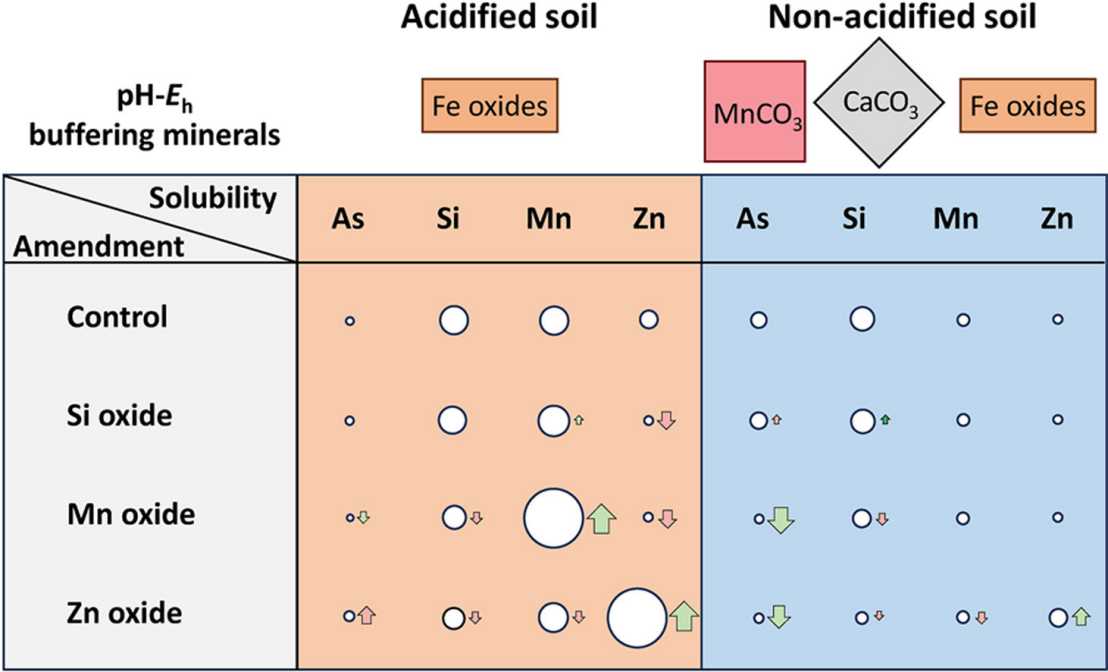New publication explores how pH effects arsenic speciation in Si-, Mn- and Zn-ammended paddy soils
The new article, published in the journal Chemosphere, is titled "Temporal development of arsenic speciation and extractability in acidified and non-acidified paddy soil amended with silicon-rich fly ash and manganese- or zinc-oxides under flooded and drainage conditions".

Oxides of silicon (Si), manganese (Mn), and zinc (Zn) have been used as soil amendments to reduce As mobility and uptake in paddy soil systems. However, these amendments are hypothesized to be affected differently depending on the soil pH and their effect on As speciation in rice paddy systems is not fully understood. Herein, we used a microcosm experiment to investigate the effects of natural Si-rich fly ash and synthetic Mn and Zn oxides on the temporal development of porewater chemistry, including aqueous As speciation (As(III), As(V), MMA, DMA, and DMMTA) and solid-phase As solubility, in a naturally calcareous soil with or without soil acidification (with sulfuric acid) during 28 days of flooding and a subsequent 14 days of drainage. We found that soil acidification to pH 4.5 considerably increased the solubility of Si, Fe, Mn, and Zn compared to the non-acidified soil. Additions of Mn and Zn oxides decreased the concentrations of dissolved arsenite and arsenate in the non-acidified soil whereas additions of Zn oxide and combined Si–Zn oxides increased them in the acidified soil. The Si-rich fly ash did not increase dissolved Si and As in the acidified and non-acidified soils. Dimethylated monothioarsenate (DMMTA) was mainly observed in the acidified soil during the later stage of soil flooding. The initial 28 days of soil flooding decreased the levels of soluble and exchangeable As and increased As associated with Mn oxides, whereas the subsequent 14 days of soil drainage reversed the trend. This study highlighted that soil acidification controlled the solubilization of Ca and Fe, thus influencing the soil pH-Eh buffering capacity, the solubility of Si, Mn, and Zn oxides, and the mobility of different As species in carbonate-rich and acidic soils under redox fluctuations.